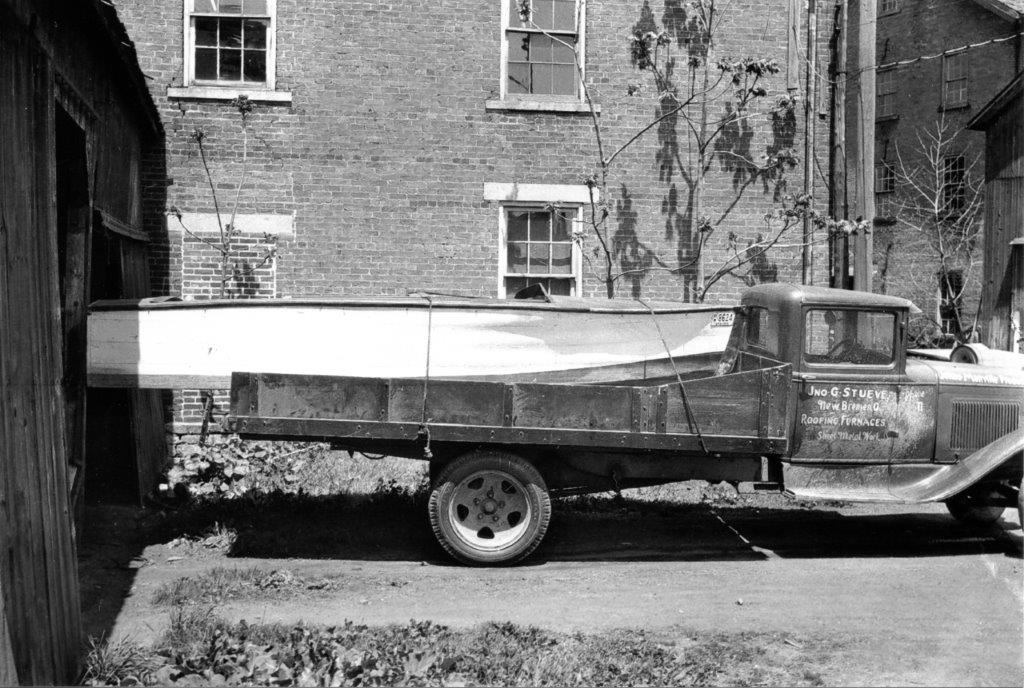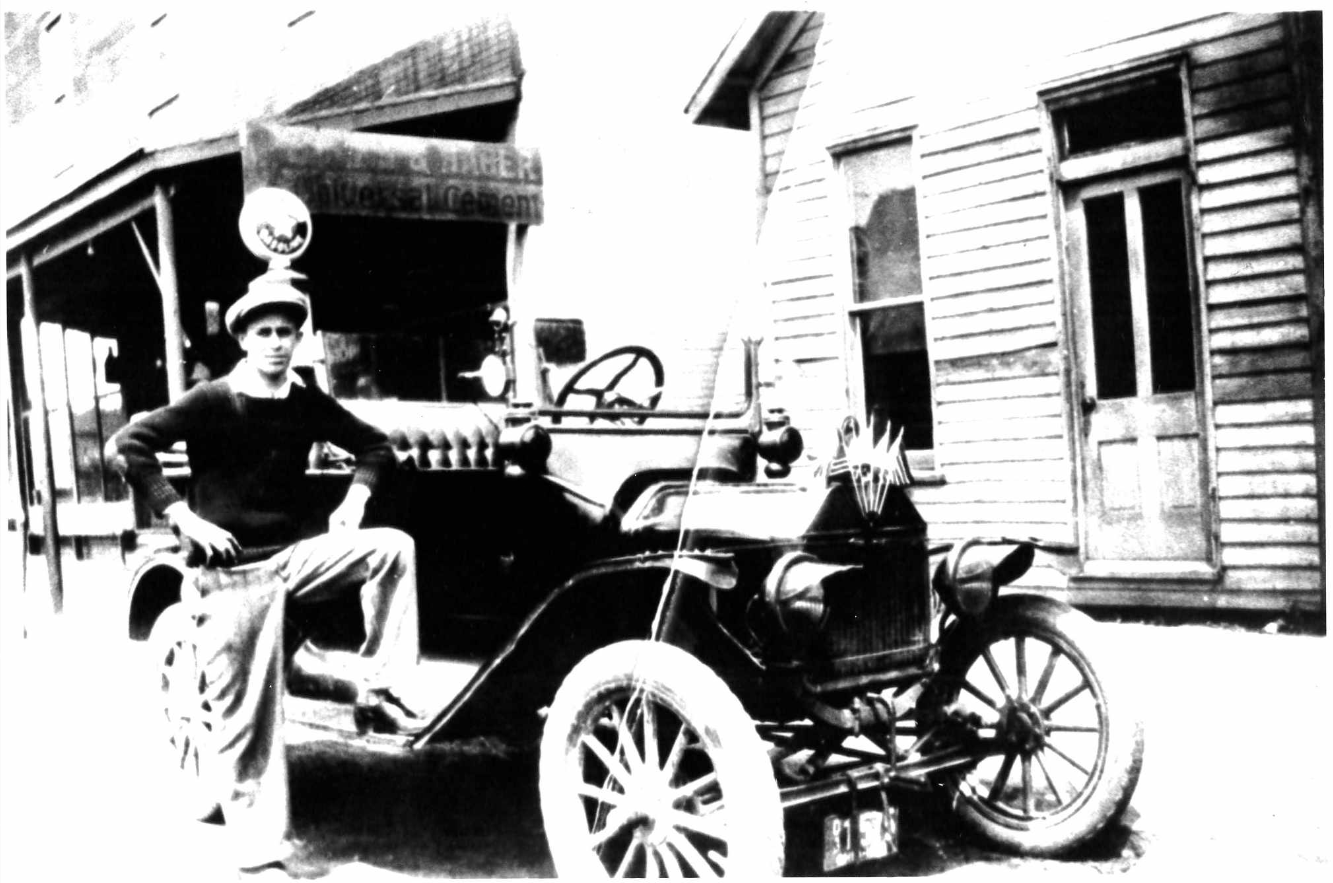It is hard to believe that I haven't written a story here in almost a year. It isn't because I stopped doing research. It's because I started new projects such as teaching a set of family history classes at the Indian River Youth Guidance Academy, participating in an increased number of virtual and in-person genealogy presentations across the US and England, and adding over 25,000 new items on FamilySearch while working on the family histories of people from the surrounding counties. All of that took up my time in 2022.
Back in 2014, I participated in the 52 Ancestors in 52 Weeks Challenge. The goal was to write a story about a different ancestor each week. I managed to write 30 stories that year. This year, Amy Johnson Crow has reissued that challenge. She provided a list of weekly prompts to help with idea development. This week's theme is "I'd Like to Meet". You can read more about this project on her website https://www.amyjohnsoncrow.com/52-ancestors-in-52-weeks. An additional incentive for me to participate in this challenge is that I am developing a new topic for my genealogy presentations. This topic is about adding social history to your family history. My intent will be to try to incorporate the social history events into each of these stories in some way. So, with that, I believe I will start with my first post of 2023.
I usually choose the person that I write about based on a recent discovery that I have made. This week is no different. I chose John George Stueve, my 1st cousin 3x removed, because I ran across a WW I record that was incorrectly listed as a hint for his uncle, my 2nd great grandfather, John Nicholas Stueve (1854-1949). Realizing that John Nicholas Stueve would have been in his 60s at the time of WW I, I had to find the right person to add the record to. A little searching and I found John George Stueve. After doing a little research on the record and adding more facts, I thought that his time in WW I would be an interesting topic and he would be someone "I'd Like to Meet".
John George Stueve was the son of Joseph J Stueve (1864-1954) and Anna Marie Kaiser (1868-1941). He was born on a farm near Minster in Jackson Township, Auglaize County, Ohio on 10 July 1892, and was the second of 12 children.
The 1900 US Census lists the family as Joseph (age 36), Anna (age 31), Louis (age 10), John (age 7), Katherina (age 6), Henry (age 4), Nora (age 2), and Josephina (age 3 months). Additionally, Joseph's mother, Carolina (age 74), was living in the house. They also had a boarder, John Peter Mack (age 16) who was listed as a farm laborer, and a servant, Nora Moorman (age 15) in the house. Joseph's parents were born in Germany and Anna's mother was born in Germany while her father was from Ohio. Carolina had immigrated to the US in 1846. Joseph and Anna had 6 children, all of them living, while Carolina had 10 children with 5 still living at the time of this census. Joseph was listed as a farmer and owned his farm without a mortgage. Louis and John were attending school.
By the 1910 US Census, the family had grown considerably. The family consisted of Joseph (age 45), Annie (age 41), Louis (age 20), John (age 17), Katherine (age 15), Henry (age 14), Elenora (age 11), Josephina (age 10), Edward (age 8), Joseph (age 6), Ferdinand (age 4), and Mariana (age 1 year 9 months). Joseph's mother, Carolina (age 84) was also living in the house. Joseph stated that they had 11 children, with 10 still living. Carolina had 10 children with 5 still living. Joseph's occupation was as a general farmer and John was working as a farm laborer. His brother, Louis, was attending business college.
On 28 June 1914, Archduke Franz Ferdinand of Austria was assinated by Serbian nationalists, starting the cascade of events to the start of WW I on 28 July 1914. The US entered the war in April 1917 and John enlisted in the US Army on 3 October 1917. John listed his occupation as sheet and metal worker at Wyen and Grieshop Manufacturing Company in New Bremen, Ohio. Later he became a partner with Wyen and eventually the owner of the tin shop.
 |
| 155 mm Howitzer, Battery A, 324th Field Artillery |
John's initial training was at Camp Sherman near Chillicothe, Ohio and he received the rank of Private 1st Class on 23 November 1917. Camp Sherman was established in 1917 for the purpose of training soldiers for WW I. He was assigned to Battery B, 324th Field Artillery, 83rd Division. On 3 June 1918 the regiment embarked for Camp Mills, New York in preperation for deployment to Europe where they would fight as part of the American Expeditionary Forces in Meuse-Argone from 12 June 1918 until 22 May 1919. From Camp Mills, they boarded the steamship
Leicestershire on 11 June as part of a larger convoy and arrived in Liverpool, England on 23 June. They then took a train to Borden, England for a 24-hour rest period before continuing on to Southhampton where they crossed the English Channel and arrived in Havre, France on 27 June 1918. After 3 days in Havre, the regiment proceeded to Bain-le-Bretagne, where they stayed until 13 August awaiting supplies, armaments, and orders. The regiment was supplied with six 155 mm howitzers which were pulled by teams of horses. Between 13 August and 21 September 1918, the regiment was in Coetquidan, France for artillery practice. The regiment then travelled by train to Soully, France and marched overland to Bois de Hesse where they were a supporting artillery brigade for the 91st Division on 26 September. On the night of 3-4 October they encamped at Bois de Nixeyville in support of the 29th Division. They began setting up their position east of the Meuse River, north of Verdun, at the Cote de Talou in support of the 18th French Division and 17th Army Corps. All the time while setting up their position they were under fire from the Germans.
The regiment experienced its first offensive action on 8 October and began advancing to the Cote des Roches on 9-10 October where they stayed until 30 October. The battalion moved out towards Cinq Freres on 29-30 October in support of the advancing 79th Division and crossed the Meuse River on 31 October and arrived at Bois de Montfaucon to support the 32nd Division. The batallion continued on the move and took up positions at Bois d'Ecurey on 10 November 1918 and attacked on the morning of 11 November. They continued firing until 10:25 am on 11 November 1918 after the signing of the Armistice. The battles involved 1.2 million Americans with over 350,000 casualties, including over 26,000 Americans and 28,000 Germans. There was also a significant loss of horses due to the constant fighting and movement between 8 October and 11 November, with only 517 of the original 957 horses remaining. On 16 November an additional 600 horses were received at Bois d'Ecurey, allowing the regiment to start their crossing of the Rhine during their advance into Germany as an occupying force. They arrived at Echternach on 1 December and Engers on 14 December. John became a Corporal on 27 March 1919 while part of the Army of Occupation in Germany. They remained in Germany until 22 April 1919 when they began preparing for their return to the US aboard the U.S.S. Seattle departing from Brest, Fance on 10 May 1919 and arriving in Hoboken, New Jersey on 22 May. The voyage back was one of celebration. There was every effort made to entertain all aboard with frequent band concerts, movies, boxing and other forms of entertainment. The soldiers even published a newspaper called "The Seasick Seattle" which included articles and humurous reminiscenses. He was honarably discharged on 4 June 1919 and returned home.
The 1920 US Census has John Stueve (age 26) as a boarder in the home of John Matters on South Franklin Street in New Bremen, Ohio. John's occupation is listed as tin smith.
On 8 June 1921, John (age 28) married Estella E. Busse (age 25), the daughter of Frank and Josephine (Ortman) Busse from Minster, Ohio. The marriage ceremony took place at St. Augustine Catholic Church in Minster.
The 1930 US Census has John Stueve (age 37), his wife Estella (age 34), Paul (age 7), and Roman (age 5) living at 314 South Washington Street in New Bremen, German Township, Auglaize County, Ohio. John owned his home valued at $2700. His occupation is listed as a retail merchant for a sheet metal company. The family owned a radio which was a sign of status for the time. The first commercial radio stations were established in the 1920s. Radio was seen as a way for people to consume news and entertainment and was beginning to be a way for businesses to advertise products for sale to the masses.
 |
| John Stueve Tin Shop truck |
In the 1940 US Census the family is still living at 314 South Washington Street in New Bremen. The family includes John (age 47), Estella (age 44), Paul (age 17), and Roman (age 15). John and Estella are listed as completing 2 years of high school while Paul and Roman had completed 3 and 2 years of high school respectively. John is listed as the owner of the tin smith company and is working 44 hours per week.
Paul Stueve married Margaret Bruggeman on 28 December 1944 in Henry County, Indiana. Roman Stueve married Ruth Borton on 18 December 1946.
In 1950 John (age 57) and Estella (age 54) are still living at 314 South Washington Street in New Bremen, Ohio and John is listed as the owner of the Stueve Tin Shop.
 |
| Copper crucifix that topped the church. |
John owned the Stueve Tin Shop for 41 years prior to his retirement in 1957. He also served several terms on the New Bremen Board of Public Affairs (1932-1933, 1934-1935, 1938-1939) and was a charter member and past commander (1932-1933, 1939-1940) of the New Bremen American Legion Post 241 which was formed in 1919. He was also a charter member of the Holy Redeemer Church where he constructed the crucifix that topped the church in 1948 and an active member of the Holy Name Society.
 |
| Stueve headstone, St. Augustine Cemetery |
On the evening of 11 August 1963, John died suddenly of a heart attack at his brother Joseph's home northeast of Minster, Ohio. Joseph's home was the family farm where John and his siblings grew up. His funeral was held on 14 August at Holy Redeemer Church and he was buried in the St. Augustine Cemetery in Minster, Ohio.
As you can see, John Stueve had an interesting life. He participated in battles that led to the end of WW I. He was an important businessman in his community. He participated in his local government. He was a charter member in establishing the church he attended and in forming the local American Legion Post of which he was a commander. For those reasons and more, I would have liked to have met John Stueve to hear the stories that he must have had over his 71 years of life.
























